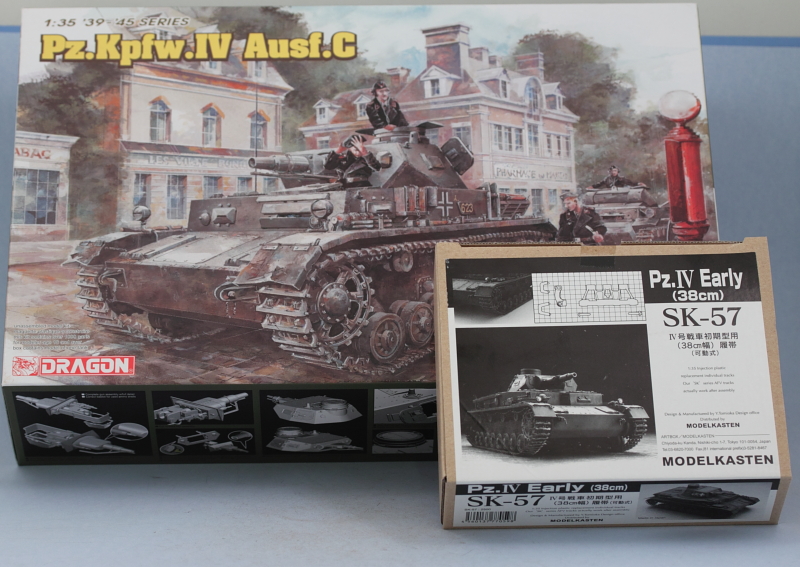Moving right along with this one, I started work on the upper hull with Step 5. This step deals with the air intakes and the upper hull rear plate. The option is provided to use either a one-piece styrene assembly for the intakes or use a 7-part PE assembly. I opted for the PE as the intakes on the C are a prominent feature and the PE provides a more in-scale appearance. The PE assembly was done using CA gel as the DML design is pretty sturdy on its own as it employs a slot/tab arrangement for each of the parts.

The intakes were glued into place with CA gel at the front only and then the rear hull plate fitted. This was to insure that I had a solid alignment and some flexibility at the rear portions of the intakes to make minor fit adjustments if needed. Once the rear plate had set, I went back and used liquid glue and some strategic amounts of CA gel to get the rest of the intakes aligned. The pic below is pre-alignment.
I also left off part E23 until the upper and lower hulls are joined as it is the top half of the bolt flange on the real deal and needs to align with the lower hull to be correct. The hooks for the tow cable were also left off for the time being to avoid damage/loss and will be added later.

Step 6 assembles the superstructure front plate and includes some nice optional detail for the driver's periscope and vision block as well as the radio operator's pistol port and vision block. None of this will be seen on my build since those hatches will remain closed, so the assembly of those parts was skipped. I did complete the exterior as called for with the installation of the pistol port, vision port cover, and the driver's visors and rain shield. I posed the driver's visors in the open position.
Step 7 is a minor detail step that assembles the jack block (skipped for now) and the hull vision ports (skipped entirely). Step 8 assembles the upper hull superstructure and this requires some strategic thinking in terms of order. I started with the side panels first, using regular glue as they attach only at the top edge and let that set a bit. Then I added the front plate again using regular glue and careful use of liquid glue where it met the side panels. Once that had set enough to handle without causing things to shift, I used finger pressure and light doses of liquid glue along the top edges to get the plate edges to merge with the molded-on weld detail.
While all that was drying, I assembled the glacis plate along with the transmission and brake access hatches. These were all in the closed position since I don't have any interior to show off but have nice interior detail as well...the only drawback is that the transmission access plate fits a little loose in its position so careful alignment is called for to avoid one side having a larger gap than the other. I did not join the glacis to the superstructure as called for just yet...I will wait to do that until I'm ready to join the upper and lower hulls together to avoid any possible fit issues.
Rounding things out in the step, I installed the engine deck hatches, all in the closed position. The kit provides detail parts for the intake fans but those aren't needed unless that hatch is being displayed open, so they will end up in the spares bin.

Next up will be the fenders and the joining of the upper and lower hull together.
